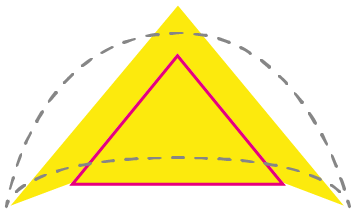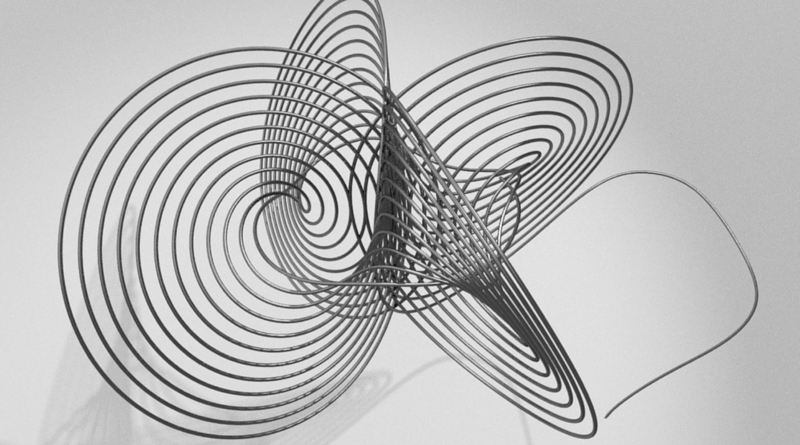Short Row Calculations Made Easy
Crescents have been very popular shawl shapes for a few years and don’t seem to lose any popularity among knitters all over the world so far. Guess it’s time to devote some time to explain crescent shawls in detail: how do they look like, and how can they be constructed?
This article is part of the Complete Guide to Crescent Shawls.
Short Row Calculations
As mentioned in yesterday’s post, the triangle section is shaped by working short rows. So how can we calculate the number and position of the short row turning points for a given width and height?

Let’s look closer at the triangle outlined in pink above. Let’s calculate the number of stitches to cast on (the lower edge of the triangle is our cast on edge) first and call this number C. Our example uses C = 135 stitches.
Assuming we want to end up with one live stitch between the last two turning points (it works for other numbers too, but we’ll deal with this later) we need to work short rows to get from 135 stitches to one single stitch.
We will work one short row turn per row – one on the right side, the other one at the wrong side of our knitting. That’s a constant.
The next thing we need to calculate is the number of rows to achieve our desired height. For a row gauge of 6 rows per inch and a desired height of 20 inches we need to work 120 rows in total.
Calculating Turning Points
We need to short row 135 stitches in 120 rows resulting in a theoretical value of 135/120 = 1.1 stitches between our turning points. Of course this is not achievable – we cannot work fractions of stitches!
We need to round this number.
We could work short row turning points every stitch, or every second stitch.
As one of these stitches is our turning point stitch itself, we need to leave no stitch (wrapping every stitch) or one stitch (wrapping every second stitch) between our turning points (wrapped stitches).
To achieve turning points at fractions (wrapping every 1.5 stitches, for instance) we need to alternate between two round numbers (for every 1.5th stitch leave 0,1,0,1,0,… stitches between wrapping.
If this all sounds too complicated for you – and I don’t blame you, most people are – just use either one or two stitches between the turning points.
Trapezoids Instead of Triangles: Leaving More Stitches at the Top
You can leave any number of stitches between your last turning points at the upper edge. The only thing you need to change is the calculation of the amounts of stitches to short row decrease: C minus the stitch count at the upper edge is the amount of stitches to be short rowed (“decreased”).
Any questions so far? Feel free to ask by leaving a comment below!


I have always short row shaped from the center out, after casting on the intial large amount of stitches.
THen I left 2-3 stitches in between the turning points and knit 2 stitches together, wrap and turn, to pull the shawl in a little and decrease stitches. This limits stitch design in the center of the shawl. Your way sounds much easier and does allow for more creative design. Thank you for clearly explaining this. The math was always a little challenging figureing this out, but you have clearly stated how it works.
Thank you.
Pingback: Crescent Shawl Lace Patterns Tutorial - knitting.today
Pingback: The Complete Guide to Knitting Crescent Shawls - knitting.today
I’ve been looking for a tutorial like this, thank you!
My pleasure!
Great explanation of this concept.
Thank you.
My pleasure!
I’ve had a thirst for knowledge when it comes to anything knitting related since I picked up my needles again, years after putting them down when I was in university, back in the mists of time. Since I began knitting again, I’ve been wanting to learn about design, and you’ve provided an essential piece of the puzzle with your Complete Guide To Crescent Shawls tutorials. If I were thirty years younger, I’d be jumping up and down with glee! Thank you so very much for taking the time to teach those of us who are interested in learning. 🙂
Cheers,
Wendy
Pingback: How To Knit Crescent Shawls: The Ultimate Tutorial - knitting.today
Pingback: Four Ways of Knitting Sock Heels - knitting today